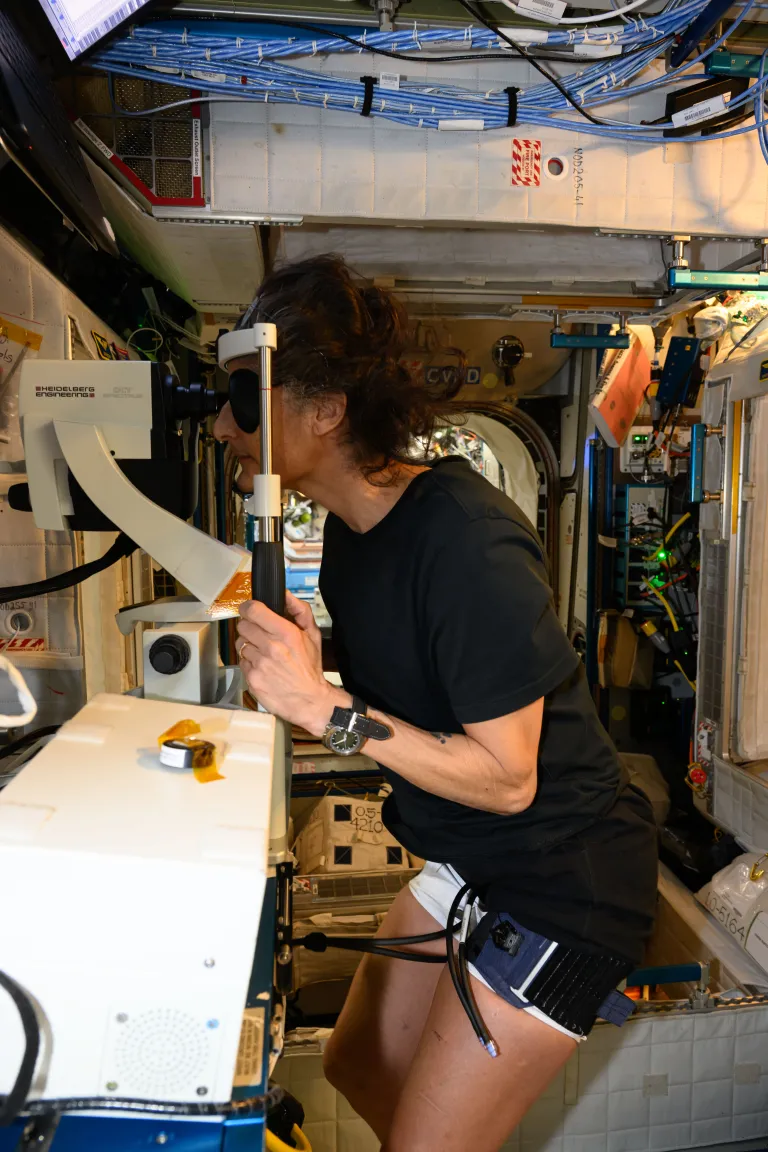Imagine you are aboard the International Space Station, floating in microgravity, gazing down at Earth and up at the stars, only to notice that your vision is starting to blur. Yes, it’s real! As astronauts spend longer durations in microgravity, many begin to notice changes in their eyesight.
Some astronauts even need stronger reading glasses as their mission progresses. This condition, known as Space-Associated Neuro-Ocular Syndrome (SANS), is marked by swelling of the optic nerve and a flattened eyeball. This new research was published by NASA on July 18, 2025, in an article titled ‘Vision Changes on Space Station.’

Microgravity causes blood and cerebrospinal fluid to shift toward an astronaut’s head, pressing on their eyes and brain. The Thigh Cuff study tests whether tight leg cuffs can redirect these fluids to reduce pressure. If effective, the cuffs could safeguard vision on missions to Mars and help patients on Earth with fluid buildup from prolonged bed rest. About 10% of astronauts experience significant vision issues, making this a growing concern.
The Fluid Shifts study, conducted from 2015 to 2020, used MRIs and optical coherence tomography to examine blood flow from the brain. Higher fluid pressure in the skull likely contributes to SANS, with one astronaut’s severe symptoms easing after B vitamin supplements and lower cabin CO₂ levels. The human eye processes roughly 10 million bits of visual data per second, so even slight pressure changes can disrupt vision. These findings suggest spacecraft air quality plays a role in eye health.
A Canadian Space Agency study, SANSORI, found that spaceflight reduces eye tissue stiffness, similar to changes in aging or glaucoma, which affects over 60 million people worldwide. Less rigid eye tissue may cause the eyeball to flatten in space. This discovery could guide treatments for eye diseases on Earth, where tissue stiffness often impacts vision. Understanding these changes helps connect space and terrestrial medicine.
Japan’s MHU-8 study examined mice in space, revealing genetic changes in their optic nerves and retinas after flight. Artificial gravity reduced these changes, suggesting that future spacecraft could use rotation to mimic gravity and protect vision. These genetic findings may lead to new treatments for vision loss on Earth. Space research often uncovers solutions with wide-reaching benefits.
As we plan for longer space missions, protecting astronauts’ vision is important. Studying SANS (Space-Associated Neuro-Ocular Syndrome) tells us how eyes handle pressure and environmental changes, offering vital lessons for eye care everywhere—in space and on Earth.

